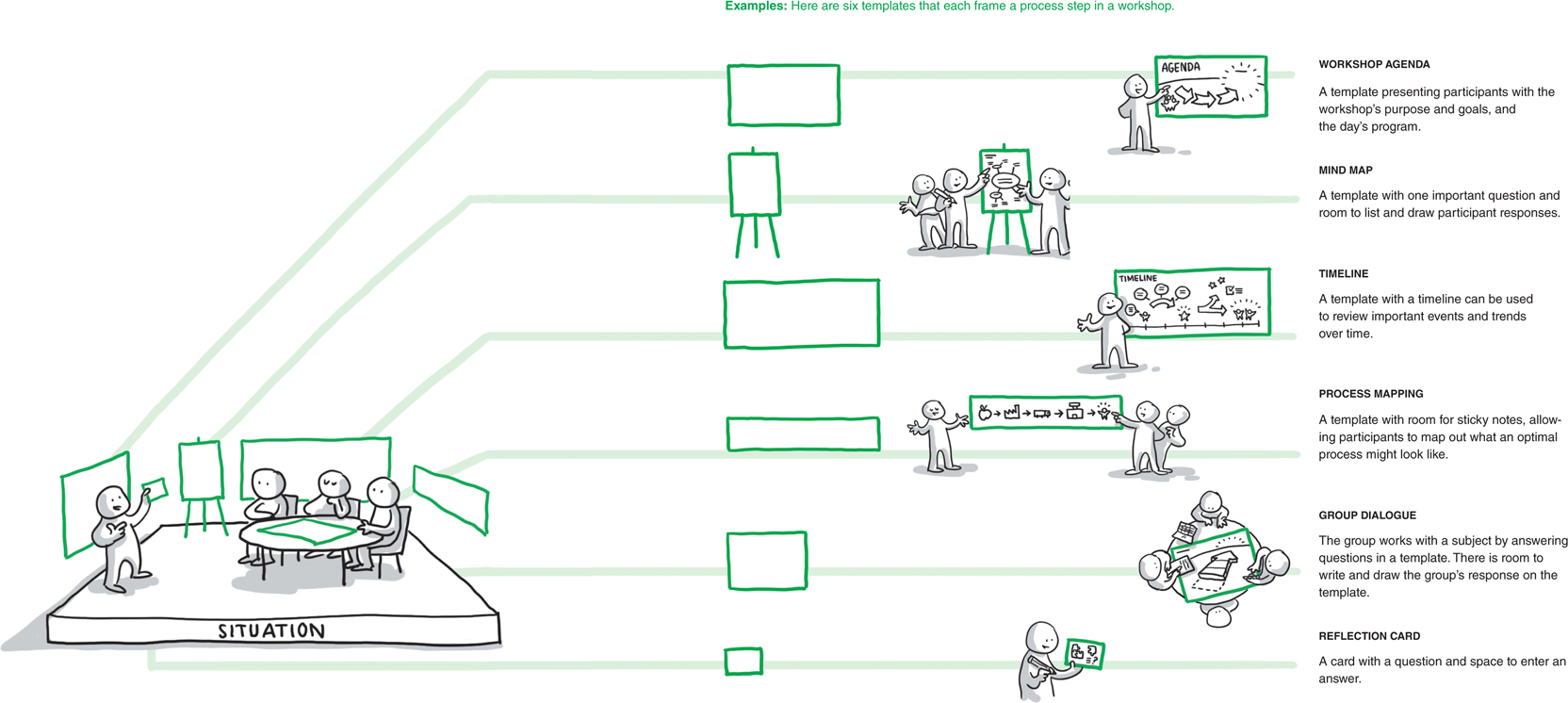4. Create engaging templates


Create clarity
Why templates? A template organizes information visually. A template can provide a framework and create clarity in a process in sections or as a whole. Good templates can handle complexity, focus dialogues, and promote collective learning.
Templates must be adapted to fit the situation; they must be based on the purpose of the process and make use of (some of) your pre-designed process questions.
BUILD YOUR LEARNING ARENA
When you work visually, it makes sense to use the physical surfaces of the room to chart information and structure dialogues. We call this building a visual learning arena. You will find it to your advantage to build your visual learning arena from templates. Your learning arena needs to support your participants in working in a structured, holistic, and systematic manner with their shared knowledge. Each template can be used to frame one element in your process design. Each template has its own purpose, but together the templates all serve the overarching purpose and goal of a given process. Start small. Create a simple template that supports a single part of your process design.

Template considerations
When ...
Get Visual Collaboration now with the O’Reilly learning platform.
O’Reilly members experience books, live events, courses curated by job role, and more from O’Reilly and nearly 200 top publishers.

